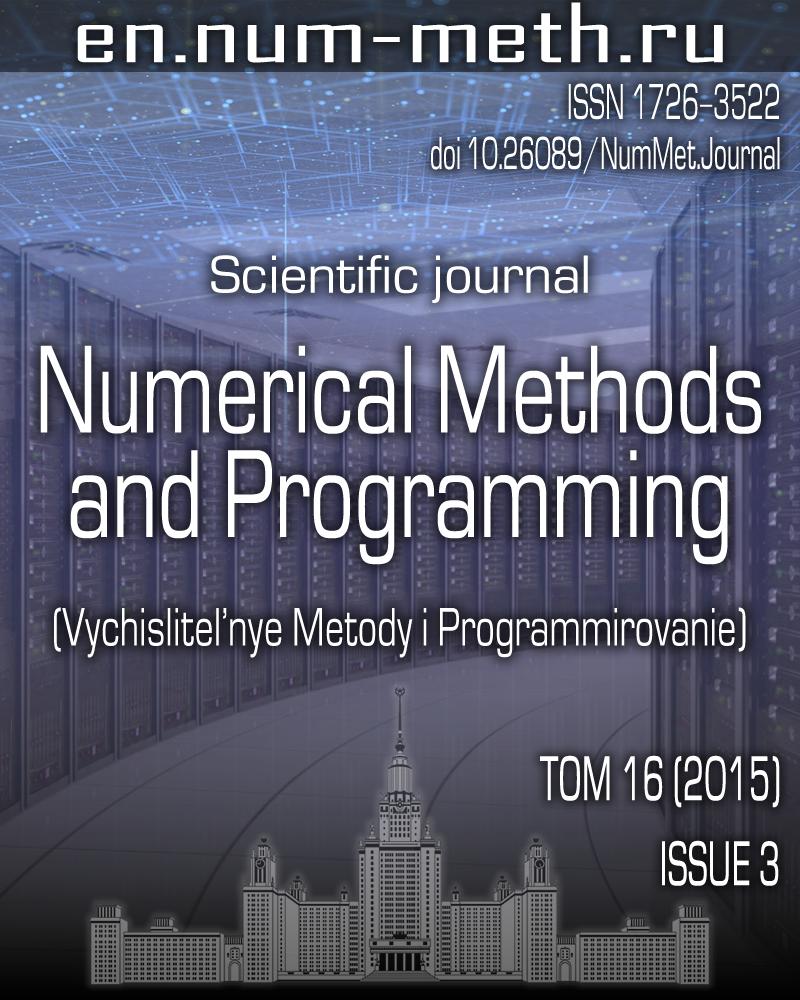DOI: https://doi.org/10.26089/NumMet.v16r337
Modeling of riveted assembly of wing sheathing with forward stiffeners
Keywords:
panel riveting
ribbed stiffeners
plasticity
inverse problems
geometrical parameters
finite element method
Abstract
Modeling of a high-reliability riveted joint of a double-curvature panel with ribbed stiffeners is considered. A mathematical formulation of the problem devoted to riveting the joints of panels and stiffeners is given. An iterative method of determining the forward curvatures of stiffeners that provide the prescribed geometrical parameters of riveted panels is proposed. This method is implemented using the MSC.Marc and MSC.Patran finite-element analysis software packages.
Published
2015-07-14
Issue
Section
Section 1. Numerical methods and applications
References
- A. I. Oleinikov and K. S. Bormotin, “Modeling of the Panel-Riveting Process,” Dal’nevost. Mat. Zh. 13 (1), 102-106 (2013).
- A. I. Oleinikov, K. S. Bormotin, and A. M. Nogovitsin, “Simulation and Computing of the Processes of Panel Riveting,” Uchen. Zap. Komsomolsk-na-Amure State Tech. Univ. 2 (1), 41-48 (2013).
- R. I. Nepershin and V. V. Knigin, “Analysis of the Settlement Process of a Riveted Joint Head,” Probl. Mashinostroeniya Nadezhn. Mashin, No. 3, 87-94 (1992).
- G. V. Musayelyan and L. H. Zakaryan, “Investigation of Truck Frame Bending in Vertical Plane with the Help of Finite-Element Method,” Izv. Armenian Akad. Nauk 59 (3), 465-471 (2006).
- G. P. Cherepanov, Fracture Mechanics of Composite Materials (Nauka, Moscow, 1983) [in Russian].
- K. S. Bormotin, “An Iterative Method for the Solution of Inverse Shaping Problems under Creep Conditions,” Vychisl. Metody Programm. 14, 141-148 (2013).
- K. S. Bormotin, “Iterative Method for Solving Geometrically Nonlinear Inverse Problems of Structural Element Shaping under Creep Conditions,” Zh. Vychisl. Mat. Mat. Fiz. 53 (12), 2091-2099 (2013) [Comput. Math. Math. Phys. 53 (12), 1908-1915 (2013)].
- K. S. Bormotin and V. S. Logvina, “A method of Iterative Regularization for Solving Inverse Problems of Forming Structural Components,” Vychisl. Metody Programm. 15, 77-84 (2014).
- S. N. Korobeinikov, Nonlinear Deformation of Solids (Izd. Ross. Akad. Nauk, Novosibirsk, 2000) [in Russian].
- R. Hill, “On Uniqueness and Stability in the Theory of Finite Elastic Strain,” J. Mech. Phys. Solids 5 (4), 229-241 (1957).
- F. P. Vasil’ev, Methods of Optimization (Faktorial Press, Moscow, 2002) [in Russian].
- Marc Vol. A: Theory and User Information, MSC.Software Corporation.
http://www.mscsoftware.com/product/marc . Cited June 23, 2015. - B. D. Annin, A. I. Oleinikov, and K. S. Bormotin, “Modeling of Forming of Wing Panels of the SSJ-100 Aircraft,” Zh. Prikl. Mekh. Tekh. Fiz. 51 (4), 155-165 (2010) [J. Appl. Mech. Tech. Phys. 51 (4), 579-589 (2010)].
- V. S. Zhernakov, A. N. Ermolenko, and R. M. Sabirov, “Effect of Stress-Strain State on the Cyclic Fracture Resistance of Riveted Joints,” Vestn. Ufa Aviatsion. Tekh. Univ. 15 (4), 67-72 (2011).
- E. A. Al-Bahkali, “Finite Element Modeling for Thermal Stresses Developed in Riveted and Rivet-Bonded Joints,” Int. J. Eng. Technol. 11 (06), 86-92 (2011).
- S. Gómez, J. Oñoro, and J. Pecharromán, “A Simple Mechanical Model of a Structural Hybrid Adhesive/Riveted Single Lap Joint,” Int. J. Adhes. Adhes. 27 (4), 263-267 (2007).
- T. Sadowski, M. Kneć, and P. Golewski, “Experimental Investigations and Numerical Modeling of Steel Adhesive Joints Reinforced by Rivets,” Int. J. Adhes. Adhes. 30, 338-346 (2010).
License
Copyright (c) 2015 Вычислительные методы и программирование

This work is licensed under a Creative Commons Attribution 4.0 International License.


